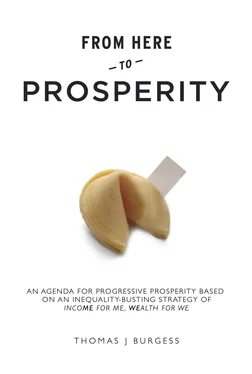Although the accepted version of history is that the railways were a product of gritty, maverick free enterprise, in reality the US and state governments played a huge role from the very beginning by enabling the rail barons to sequester land from native Americans and by using the army and the law to enforce ‘progress’. The term ‘railroading’ for bullying through a plan did not come about by accident. However, towns and cities grew alongside the railways and they were essential to commerce, and it could be argued that the railways gave a point to some territories seeking statehood and admission to the USA, whose growth in turn created a world power.
At roughly the same time, in the UK, despite the scale of the British Empire, poverty and starvation at home were rife. Agricultural productivity was high, money was pouring into Victorian cities such as Manchester, Bristol and London. But parish and town records show that within miles of major towns, bodies were frequently found whose stomachs, on post-mortem examination, contained little more than grass. One reason was poor communications. Food grown in one county simply couldn’t get to people in the next. Then came the railways, or more accurately, the railway mania of the 1830s and 1840s. An astonishing 272 Acts of Parliament were passed permitting the construction of 9,500 miles (15,300 km) of new railways. The government’s role was to permit almost every plan (many Members of Parliament were investors themselves) and leave the railways to sort themselves out: ‘laissez-faire’, let them do what they wanted. It allowed riches for some and ruin for many investors. It was a free for all, a bubble that burst, leaving a third of the proposed railways un-built, often because companies were taken over by rivals and construction was choked off. Nevertheless all those Acts of Parliament created rights of way over land, changing its use and its value, leading eventually to the building of suburbs and, much later, enabling the expansion of the telecoms network that is integral to today’s economy.
Despite apparently being ‘hands off’, the mid-19th-century government of capitalism’s golden era played a massive role both literally and metaphorically in changing the landscape of Britain. After the devastation of the Second World War, the socialist Labour government, swept to power in a landslide election, saw that the railways would be essential to rebuilding the country. The US government was to recognise the importance of investing in infrastructure as well as to feeding and keeping free the people of Western Europe through the Marshall Plan. In Britain this was the job of the government, which, along with other essential industries such as coal and steel, took over the railways, worn out and war weary like the populace, though they were.
By the 1960s the state, not private industry, had made a vast investment of £1.2 billion in replacing steam with electric and diesel locomotives, while the network of rail lines had been rationalised, the amount of rolling stock reduced and the workforce cut from wartime levels. However, investment in the railways and the service they provided to state and private sectors alike came to be regarded as losses. This mindset also affected the view of other strategic areas such as the state-owned (and rescued) airline, the ferry services to mainland Europe and Ireland; the National Grid supplying power to homes and industry, the gas supply, the General Post Office telephone system, Royal Mail postal service and so on. Framing investment in these as losses provided part of the rationale for the privatisation of publicly owned assets and services at knock-down prices often set on the self-serving advice of very large-scale institutional investors. This intervention by government was driven by neo-liberal beliefs. It was intended to engineer a property and share-owning democracy under the flag of popular capitalism; creating a nation of small investors was in part aimed at curbing state control. Instead, it both resulted in weakening what little influence taxpayers and voters had over the economy and failed to spread private ownership or investment. Ownership of stocks and shares in Britain, like other forms of wealth, is concentrating in fewer hands. According to the Office of National Statistics, UK individuals owned 11.5% of the value of the UK stock market at the end of 2010, down from 16.7% in 1998. Nor have taxpayers been freed from spending on the industries whose ownership they have lost. Aside from paying fares, guaranteed – by the state – to rise at rates higher than inflation, taxpayers also subsidised the UK’s private train operators to the tune of £4 billion in 2013. To add insult to injury, the operators then paid their shareholders dividends of £200 million. The Office for Rail Regulation has called the way the UK’s railways are now run ‘the economics of the madhouse’.
The government – our representatives – should be responsible for infrastructure investment: not just transport infrastructure but education and health, as well as energy and electronic communications. All these make the economy work, connect and grow. Yet, government has lost sight of its vital role in making infrastructure happen, because ‘it is too expensive’, missing the point that investment increases growth and generates government revenue. This does not have to mean the state paying for it all, but government certainly needs to create the environment for genuine investment. True, building new infrastructure and rehabilitating existing works are costly. Projects must compete with other needs in the budgets of revenue-strapped federal, state, and local governments. And the return on investment in infrastructure can take many years – beyond the planning horizon of many elected officials – so the temptation is strong to delay infrastructure maintenance. However infrastructure is an investment that brings returns over five, ten, twenty or fifty years.
The relationship between infrastructure development and economic growth has not gone unnoticed by the world’s two most populous countries, China and India, which have a combined population of almost 2.5 billion. The experience of these two rapidly growing nations illustrates how different the paths to growth can be. Living standards in China, as measured by GDP per capita, overtook those in India more than 15 years ago. Since that time the Chinese economy has grown nearly twice as fast as India’s, and its GDP per capita is now more than double India’s. Investment in infrastructure is recognised as one of the main ingredients of China’s success. China’s most visible infrastructure investment, however, has been in roads and highways. By 2020 China plans to build 55,000 miles of highways, more than the total length of the US interstate system, which was 46,385 miles in 2004, according to the Federal Highway Administration. The Chinese are also building 8000 miles (12,900 km) of high-speed rail line and have plans to double that in under a decade, whereas the whole of Europe has only 4148 miles. Currently, the UK operates 68 miles of high-speed rail and even when the new route from London to Birmingham comes into full operation in 2026, this will only double that.
There are other forms of transport and other examples of intellectual stagnation breeding economic stagnation, such as the constant vacillations over the future of London’s airports. The UK government said in 2012 that it wanted to defer the decision to expand London’s airports until after the election in 2015, but nearly a year later there is still no decision. For 50 years, governments of one stripe or another have been sitting on a proposal to build a major airport in the estuary of the River Thames east of London that could grow without causing urban upheaval. The prevailing wind in the UK comes from the southwest. Heathrow’s location west of London ensures that incoming flights pass over the capital and their frequency is such that planes appear from the ground to be on one another’s tails. London’s main airport has two runways; Amsterdam’s has six, built on reclaimed land.
Читать дальше












